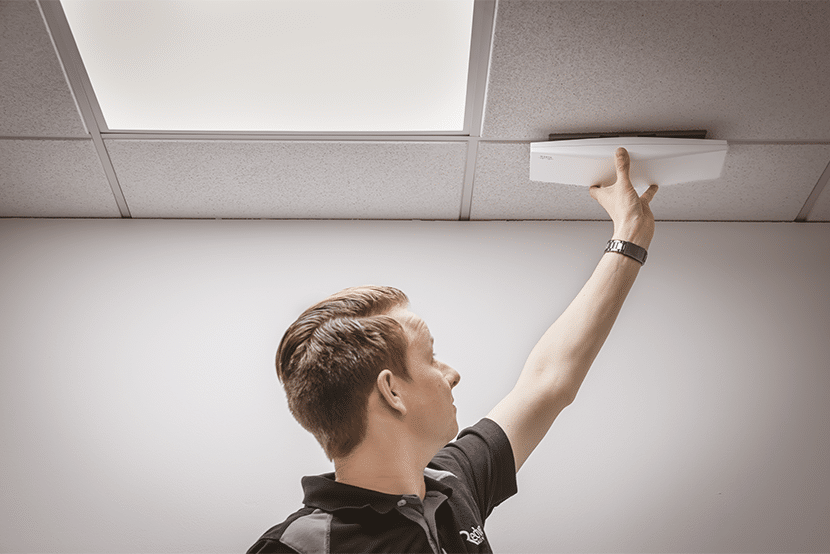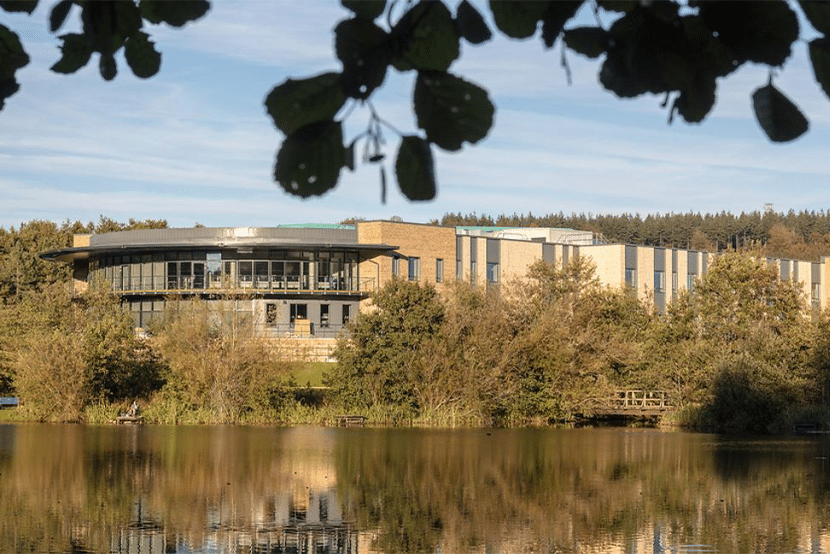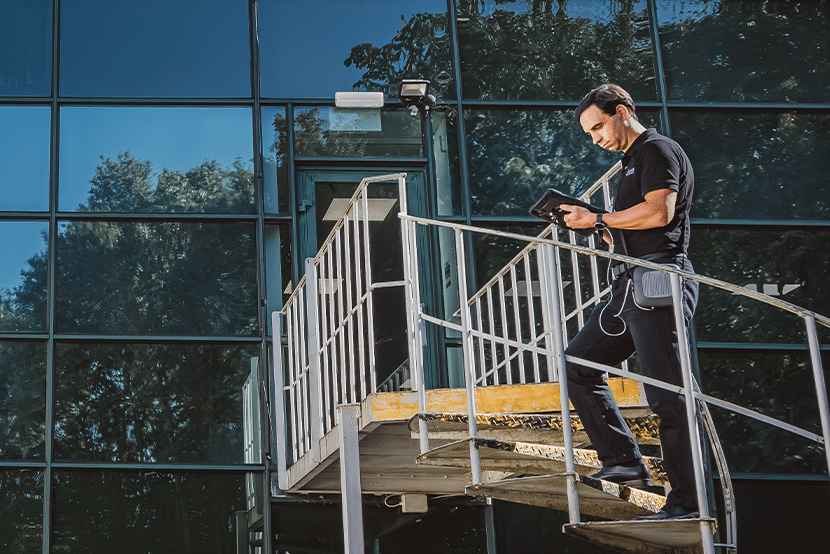Designing Warehouse Wi-Fi that Works
Our WiFi expert Leigh Hayes talks to Warehouse and Logistics Magazine (WLM) about the complexities of designing a warehouse Wi-Fi network that supports resilient and efficient supply chains.
What type of products and services does your company offer to warehousing and logistics?
Redway Networks is a specialist in wireless networks for warehouses that underpin efficient, accurate and resilient supply chains.
One of our core strengths when it comes to servicing the logistics sector is our expertise in designing wireless networks that support the specifics of warehouse environments. From the start of a project, our primary focus is delivering a strong design based on accurate data, sector experience and extensive product knowledge; it’s the most essential part of what we do.
Explain the difference to installing Wi-Fi within a warehouse than in say an office environment?
It’s vital with any Wi-Fi installation to understand the space you’re working in, but in warehouses, this is even more critical. Many interfering factors specific to this environment can result in a solution offering poorer performance than elsewhere. Warehouse layout, racking layout, stock type and how often that stock is moved can all affect your wireless, in addition to the type of building (most warehouses are made from metal which isn’t ideal for RF), ceiling angles, and interfering materials.
Office environments are more straightforward in terms of design as the ceilings are lower and there are fewer obstructions and interfering materials. It sounds complex, but really, it’s simple; once you can understand and anticipate the unique needs of the warehouse environment, you have a good foundation for a successful project.
Tell us about the challenges warehouses typically come up against and how do you help address them?
Warehouses are complex and challenging environments, so the most common problem we see is poor performance brought about by a poor design. This is often caused by a lack of understanding of how Wi-Fi will perform in warehouse environments post-installation.
If we are approached by a client that is experiencing Wi-Fi issues, we have a list of qualification questions to try and establish what might be causing the issues. We usually recommend progressing to a troubleshooting or fault-finding warehouse Wi-Fi survey where one of our certified engineers will attend the site to gather data and pinpoint the problem. Once the data has been crunched by our engineers, we invite clients on a call to explain the identified issues and discuss remedial actions for the short and longer term.
What differentiates Redway as an independent vendor and how do you help businesses choose the right technology?
Our experience in the logistics sector is vast, and as a result we know that one size rarely fits all when it comes to wireless networking in warehouses. We take the time to understand the unique requirements of a business in terms of its processes, people, and devices, as well as its needs and strategies for future growth. Being an independent vendor allows us to recommend solutions that put our clients’ business at the centre, with no product partiality.
In which sectors do your warehouse customers typically operate in and what size of business do you work with?
Our clients span the supply chain, from manufacturing to distribution, as well as a range of sectors including food, engineering, retail and many more. Our clients are also cross-vertical, so our solutions range from single warehouse installations to multi-site channels handling distribution across the UK and Europe. We’re also experienced in working on greenfield sites where flexibility and an understanding of construction projects is key.
Highlight what’s unique about the solutions Redway offers?
I would say it’s our sector knowledge and focus on customer engagement that make our solutions stand out. We have a highly technical sales team which means that from the first conversation our clients can feel confident in our ability to understand their requirements and advise on the next steps. We focus on consulting them at every stage to make sure their input helps drive the project forward.
We also understand that a solution is only a real success when it responds to our clients’ needs; not when we complete the installation. Our engineers offer extensive post-installation support that guarantees the performance their business needs beyond project completion.
What tips would you give a business looking to improve its warehouse automation?
1. Invest in design. It’s crucial for ensuring a successful project.
2. No, really, invest in design! Our heavy focus on design is fuelled by our ‘right first time’ approach which avoids the costly exercise of correcting cut corners later.
3. Don’t go for the cheapest option; it’s cheap for a reason. Your wireless technology underpins the growth of your business, so invest in the correct infrastructure.
4. Use access points that are designed specifically for warehouse environments. This gives you control of the RF and ensures your investment will last for years to come.
5. After your new network is installed, do not assume everything is fine; validate your wireless performance and make adjustments where necessary to hardware and software.
Did the Covid-19 outbreak affect your business?
Yes and no. The initial lockdown caused delays to some of our projects as we were unable to go on-site, but as soon as businesses had to adapt to new ways of working it became evident to most that investing in wireless networking was vital for business continuity. High-performance WiFi is now a major facilitator of social distancing in the warehouse, which helps keep operations both efficient and safe.
What has been the biggest news for Redway in 2020?
2020 has been an incredible year for Redway. We’ve continued to grow as a business despite COVID 19, both in terms of our clients and our team, which continually grows in size and in skills. We’ve also been expanding our product knowledge, working closely with more manufacturers to ensure we keep offering the best and latest technology the market has to offer.
Can you provide any recent examples where you have improved the connectivity of a warehouse?
We recently worked with a client that was losing tens of thousands of pounds a day as their staff couldn’t pick orders reliably or efficiently. With our troubleshooting wireless survey and prompt remedial actions, we created a short-term fix to see them through a busy period. Once this had passed, the client invested in a complete overhaul of their WLAN and infrastructure to push productivity forward and future-proof operations. This resulted in call from the MD thank us for the work we did.
What are you looking forward to as a business in 2021?
2021 is certainly going to be a very interesting year for logistics and there is a lot to look forward to. The technological advances have led to an increase not only in the integration of warehouse devices such as scanners, laptops and wearables, but also the rise of Big Data and IoT. For me, the biggest change will be the new Wi-Fi 6 standard; it will be seen in more and more devices and redefine what is possible.
2021 will certainly have its challenges too. Problems with coverage, capacity and reliability are highly common, and with tough times facing logistics in the months and years ahead, many of these issues could make or break businesses.


